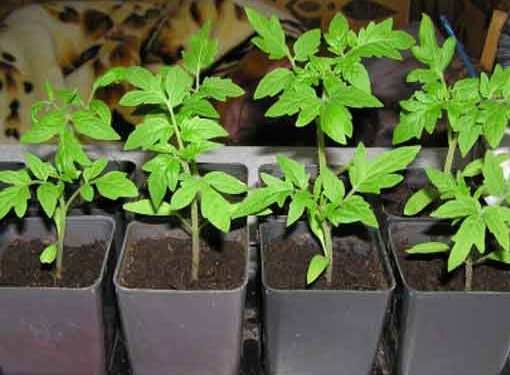All causes wilting of seedlings can be distinguished in two main categories: errors in care and disease.
Tomato seedlings like moisture, but stagnation of water, especially if the drainage holes small or clogged, it is possible to constriction of the roots. In this case, the plant responds by wilting of the leaves, but the roots of the sapling also look lethargic. It is necessary to expand and unclog the drain hole and temporarily to limit watering.
Tomato seedlings love heat, but if you put it near the battery, it may start to wither from the dry air in the room. In this case, the roots are looking quite healthy. In order for the seedlings ceased to fade, it is enough to rearrange the boxes with seedlings to another place, away from the battery.
Tomato seedlings loves the fresh air, but the seedlings, especially the young, afraid of drafts. If the seedling stands on the windowsill and the open window it gets the cold air, the leaves can start wilting. You need to change location or to stop the draft.
Most elementary – insufficient watering. If the roots of the seedling, excavated for inspection, and withered, and the soil too dry, so the seedlings just don't get enough water you need to water it more often.
Diseases of seedlings of tomatoes to fight harder than errors in care or poor living conditions. Disease can occur not only due to improper care, but also because of the soil, especially if before planting the seeds seedling soil did not obezzorazhivaniya calcining or solution of potassium permanganate.
Due to improper care, there is such a disease as black leg. The reason – the excess moisture and standing water in the box or pot. Black leg is easy to detect. In this disease darkens and wilts, the stalk of the plant, starting from the bottom. The roots look healthy at first. And the leaves wither. Then killing the root and the whole seedling. For prevention of black leg, if the seedlings are beginning to fade, a weak solution of potassium permanganate, which should be watered the soil in the box.
Due to non-disinfected soil, the seedlings can affect the fungal disease Fusarium. When the leaves lose turgor, look like they have not watered. In this case, the disease starts from the roots – the examination will identify patients withered the roots of the seedling. If diabetes is noted at the beginning, you should transplant the seedlings into the disinfected box, filled with new, not contaminated soil.
Improper care
Tomato seedlings like moisture, but stagnation of water, especially if the drainage holes small or clogged, it is possible to constriction of the roots. In this case, the plant responds by wilting of the leaves, but the roots of the sapling also look lethargic. It is necessary to expand and unclog the drain hole and temporarily to limit watering.
Tomato seedlings love heat, but if you put it near the battery, it may start to wither from the dry air in the room. In this case, the roots are looking quite healthy. In order for the seedlings ceased to fade, it is enough to rearrange the boxes with seedlings to another place, away from the battery.
Tomato seedlings loves the fresh air, but the seedlings, especially the young, afraid of drafts. If the seedling stands on the windowsill and the open window it gets the cold air, the leaves can start wilting. You need to change location or to stop the draft.
Most elementary – insufficient watering. If the roots of the seedling, excavated for inspection, and withered, and the soil too dry, so the seedlings just don't get enough water you need to water it more often.
Disease
Diseases of seedlings of tomatoes to fight harder than errors in care or poor living conditions. Disease can occur not only due to improper care, but also because of the soil, especially if before planting the seeds seedling soil did not obezzorazhivaniya calcining or solution of potassium permanganate.
Due to improper care, there is such a disease as black leg. The reason – the excess moisture and standing water in the box or pot. Black leg is easy to detect. In this disease darkens and wilts, the stalk of the plant, starting from the bottom. The roots look healthy at first. And the leaves wither. Then killing the root and the whole seedling. For prevention of black leg, if the seedlings are beginning to fade, a weak solution of potassium permanganate, which should be watered the soil in the box.
Due to non-disinfected soil, the seedlings can affect the fungal disease Fusarium. When the leaves lose turgor, look like they have not watered. In this case, the disease starts from the roots – the examination will identify patients withered the roots of the seedling. If diabetes is noted at the beginning, you should transplant the seedlings into the disinfected box, filled with new, not contaminated soil.
